Eilam Gross
CaloChallenge 2022: A Community Challenge for Fast Calorimeter Simulation
Oct 28, 2024
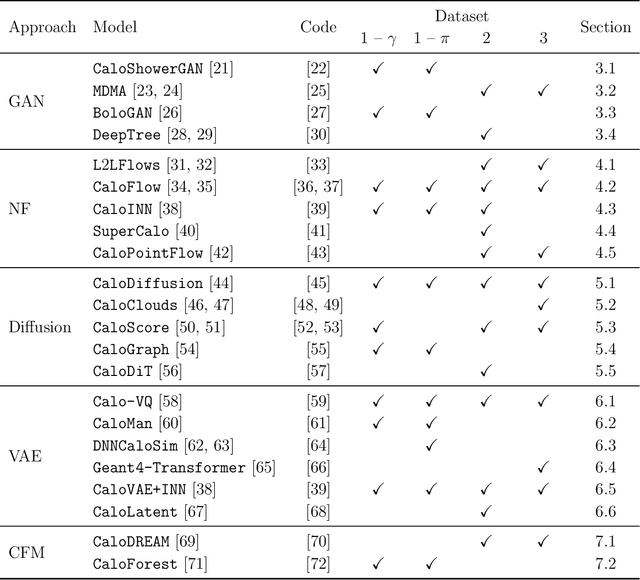
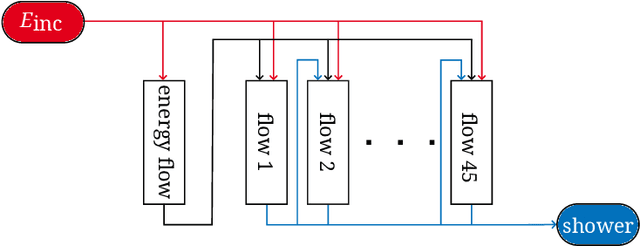
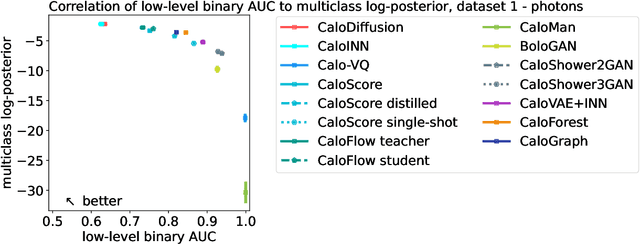
Abstract:We present the results of the "Fast Calorimeter Simulation Challenge 2022" - the CaloChallenge. We study state-of-the-art generative models on four calorimeter shower datasets of increasing dimensionality, ranging from a few hundred voxels to a few tens of thousand voxels. The 31 individual submissions span a wide range of current popular generative architectures, including Variational AutoEncoders (VAEs), Generative Adversarial Networks (GANs), Normalizing Flows, Diffusion models, and models based on Conditional Flow Matching. We compare all submissions in terms of quality of generated calorimeter showers, as well as shower generation time and model size. To assess the quality we use a broad range of different metrics including differences in 1-dimensional histograms of observables, KPD/FPD scores, AUCs of binary classifiers, and the log-posterior of a multiclass classifier. The results of the CaloChallenge provide the most complete and comprehensive survey of cutting-edge approaches to calorimeter fast simulation to date. In addition, our work provides a uniquely detailed perspective on the important problem of how to evaluate generative models. As such, the results presented here should be applicable for other domains that use generative AI and require fast and faithful generation of samples in a large phase space.
Denoising Graph Super-Resolution towards Improved Collider Event Reconstruction
Sep 24, 2024


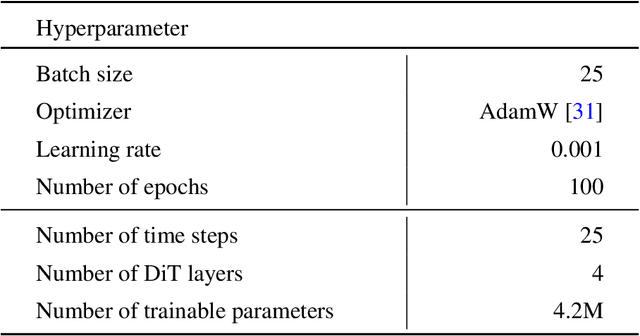
Abstract:Accurately reconstructing particles from detector data is a critical challenge in experimental particle physics, where the spatial resolution of calorimeters has a crucial impact. This study explores the integration of super-resolution techniques into an LHC-like reconstruction pipeline to effectively enhance the granularity of calorimeter data and suppress noise. We find that this software preprocessing step can significantly improve reconstruction quality without physical changes to detectors. To demonstrate the impact of our approach, we propose a novel particle flow model that offers enhanced particle reconstruction quality and interpretability. These advancements underline the potential of super-resolution to impact both current and future particle physics experiments.
PASCL: Supervised Contrastive Learning with Perturbative Augmentation for Particle Decay Reconstruction
Feb 18, 2024



Abstract:In high-energy physics, particles produced in collision events decay in a format of a hierarchical tree structure, where only the final decay products can be observed using detectors. However, the large combinatorial space of possible tree structures makes it challenging to recover the actual decay process given a set of final particles. To better analyse the hierarchical tree structure, we propose a graph-based deep learning model to infer the tree structure to reconstruct collision events. In particular, we use a compact matrix representation termed as lowest common ancestor generations (LCAG) matrix, to encode the particle decay tree structure. Then, we introduce a perturbative augmentation technique applied to node features, aiming to mimic experimental uncertainties and increase data diversity. We further propose a supervised graph contrastive learning algorithm to utilize the information of inter-particle relations from multiple decay processes. Extensive experiments show that our proposed supervised graph contrastive learning with perturbative augmentation (PASCL) method outperforms state-of-the-art baseline models on an existing physics-based dataset, significantly improving the reconstruction accuracy. This method provides a more effective training strategy for models with the same parameters and makes way for more accurate and efficient high-energy particle physics data analysis.
Configurable calorimeter simulation for AI applications
Mar 08, 2023Abstract:A configurable calorimeter simulation for AI (COCOA) applications is presented, based on the Geant4 toolkit and interfaced with the Pythia event generator. This open-source project is aimed to support the development of machine learning algorithms in high energy physics that rely on realistic particle shower descriptions, such as reconstruction, fast simulation, and low-level analysis. Specifications such as the granularity and material of its nearly hermetic geometry are user-configurable. The tool is supplemented with simple event processing including topological clustering, jet algorithms, and a nearest-neighbors graph construction. Formatting is also provided to visualise events using the Phoenix event display software.
Towards a Computer Vision Particle Flow
Mar 19, 2020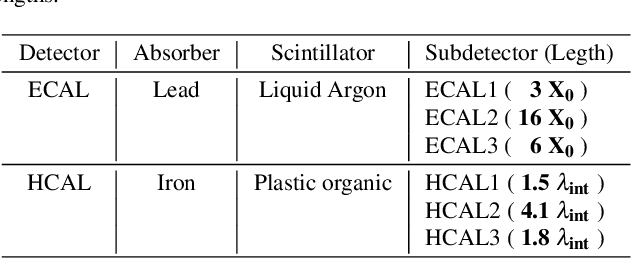
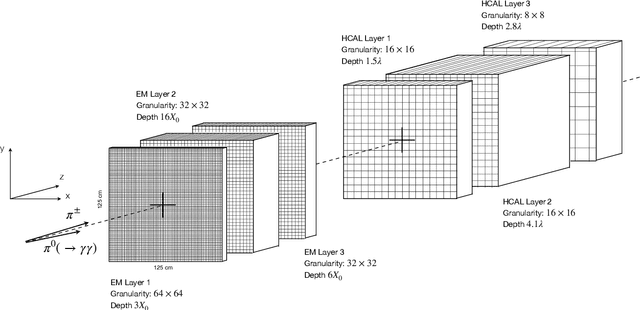
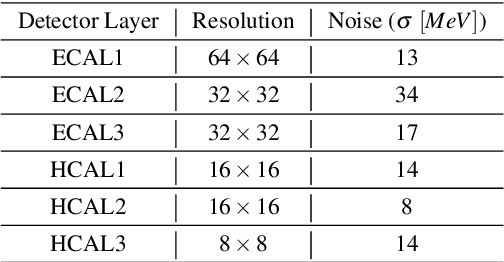
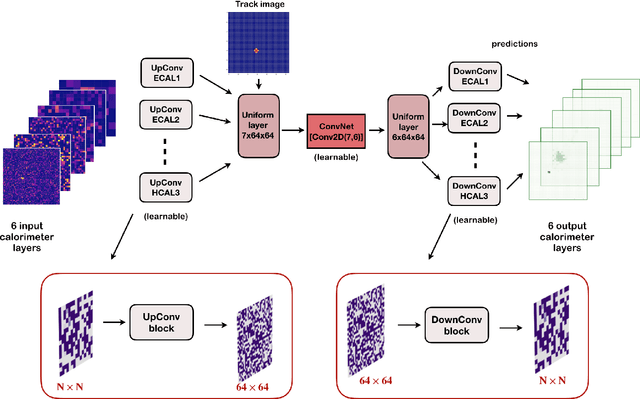
Abstract:In high energy physics experiments Particle Flow (PFlow) algorithms are designed to reach optimal calorimeter reconstruction and jet energy resolution. A computer vision approach to PFlow reconstruction using deep Neural Network techniques based on Convolutional layers (cPFlow) is proposed. The algorithm is trained to learn, from calorimeter and charged particle track images, to distinguish the calorimeter energy deposits from neutral and charged particles in a non-trivial context, where the energy originated by a $\pi^{+}$ and a $\pi^{0}$ is overlapping within calorimeter clusters. The performance of the cPFlow and a traditional parametrized PFlow (pPFlow) algorithm are compared. The cPFlow provides a precise reconstruction of the neutral and charged energy in the calorimeter and therefore outperform more traditional pPFlow algorithm both, in energy response and position resolution.
Set2Graph: Learning Graphs From Sets
Feb 20, 2020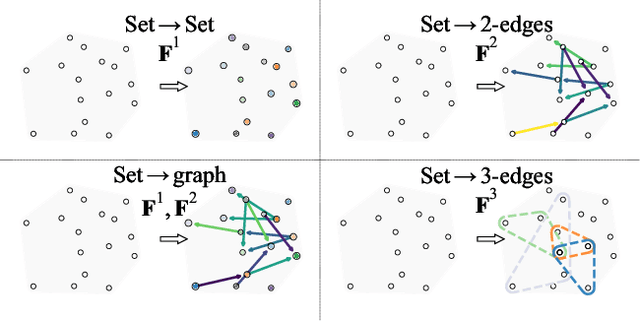
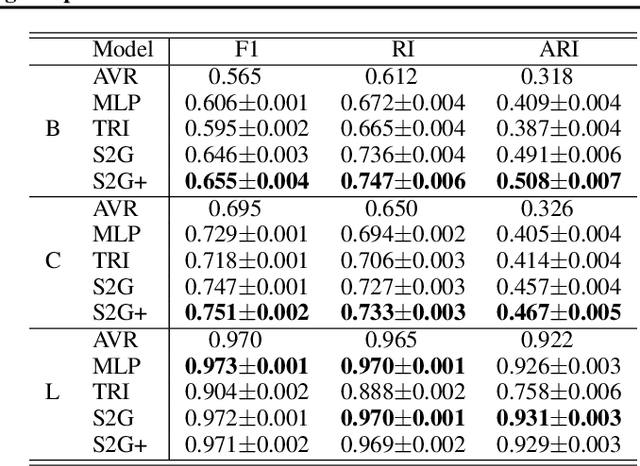
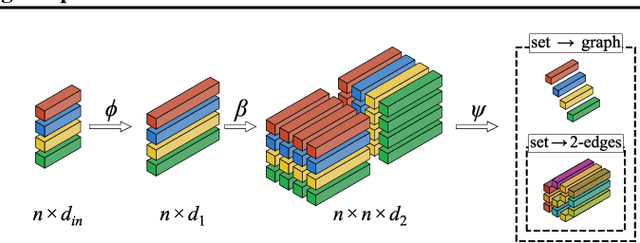
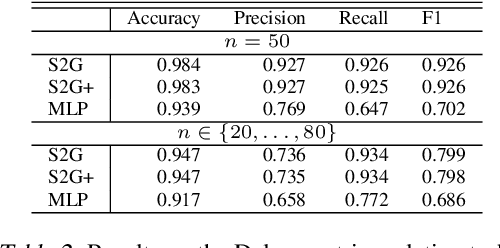
Abstract:Many problems in machine learning (ML) can be cast as learning functions from sets to graphs, or more generally to hypergraphs; in short, Set2Graph functions. Examples include clustering, learning vertex and edge features on graphs, and learning triplet data in a collection. Current neural network models that approximate Set2Graph functions come from two main ML sub-fields: equivariant learning, and similarity learning. Equivariant models would be in general computationally challenging or even infeasible, while similarity learning models can be shown to have limited expressive power. In this paper we suggest a neural network model family for learning Set2Graph functions that is both practical and of maximal expressive power (universal), that is, can approximate arbitrary continuous Set2Graph functions over compact sets. Testing our models on different machine learning tasks, including an application to particle physics, we find them favorable to existing baselines.
 Add to Chrome
Add to Chrome Add to Firefox
Add to Firefox Add to Edge
Add to Edge